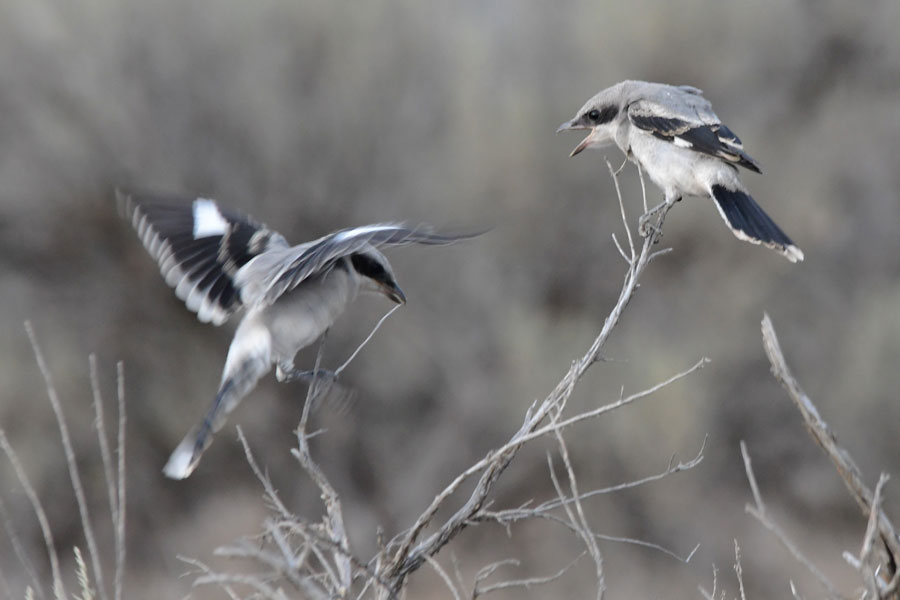Photos: Bill Schiess | EastIdahoNews.com
The flying grasshoppers never had a chance. Each time one would take off, it would get about 15 feet off the ground before one of four Loggerhead shrikes would pick it off. The two adult shrikes, also known as “butcherbirds,” were trying to teach their two chicks how to use the breeze to their advantage.
Using a power line or tall sagebrush as a perch, one adult with one of the babes would face into the breeze, watching for a hopper to take flight. When the hopper was blown toward the birds, one of them would try to catch it. As I watched the action, the adult never missed while the beginner missed catching the prey less than half the time. The adult would usually pick off the escaped insect and give it to the youngster. The only hoppers given to the young one to eat were those that it attempted to catch but missed.
Shrikes are killing machines. They not only harvest large insects, but they are a songbird that harvests other songbirds, lizards, snakes and mice. Once they have become full, they continue to hunt and kill, storing their prey by impaling them on to a thorn, a sharp branch or even on a barbed-wire fence. These habits have earned them the “butcherbird” title.
Due to their small, weak feet, these birds will also use sharp objects to hold the killed prey while they tear it apart in bites small enough to swallow.
Loggerhead shrike get their name because the size of their head is large compared to their body. They are also a summer resident in southern Idaho, where they migrate to in March, nest, raise their young and then migrate the states south of Utah and to Mexico in the fall. They are replaced in the winter by the Northern shrike, a slightly larger look-alike bird that also kills and lives on songbirds like sparrows and Horned larks.
One of the most interesting things about the two species is that the Northern Shrike nests above the Arctic Circle and only spends November through February in Idaho.
I have mistaken Loggerheads with the Northern several times and a birding expert, Darren Clark, has reminded me that the best way to tell the difference is the black eye patch, which is larger on the Loggerhead than the Northern.
My favorite place to observe the Loggerheads are on the frontage road that runs from Sage Junction to Hamer. This summer, there were at least four pairs that raised young there and now is the time to watch the young being trained by the adults.
In addition to catching grasshoppers, I have watched them chase the young Western meadowlarks and Sage thrashers through the sage. I have not seen any successful captures but they have come close. Although, I have witnessed a Prairie falcon harvest one of the young Loggerheads. The parents were not happy.
The fall migration of birds is beginning and Market Lake, Gray’s Lake, Camas National Bird Refuge and Mud Lake are excellent areas to watch for the summer residents of Southeastern Idaho to gather. Some of these gatherings can be as impressive as the spring migrations.
A great way to practice social distancing is to get in the great outdoors and see reality in action.
"bird" - Google News
August 16, 2020 at 07:27AM
https://ift.tt/30XMZxK
One of the bird kingdom's biggest killing machines and where you can see them in action - East Idaho News
"bird" - Google News
https://ift.tt/2s1zYEq
https://ift.tt/3dbExxU
Bagikan Berita Ini


















0 Response to "One of the bird kingdom's biggest killing machines and where you can see them in action - East Idaho News"
Post a Comment